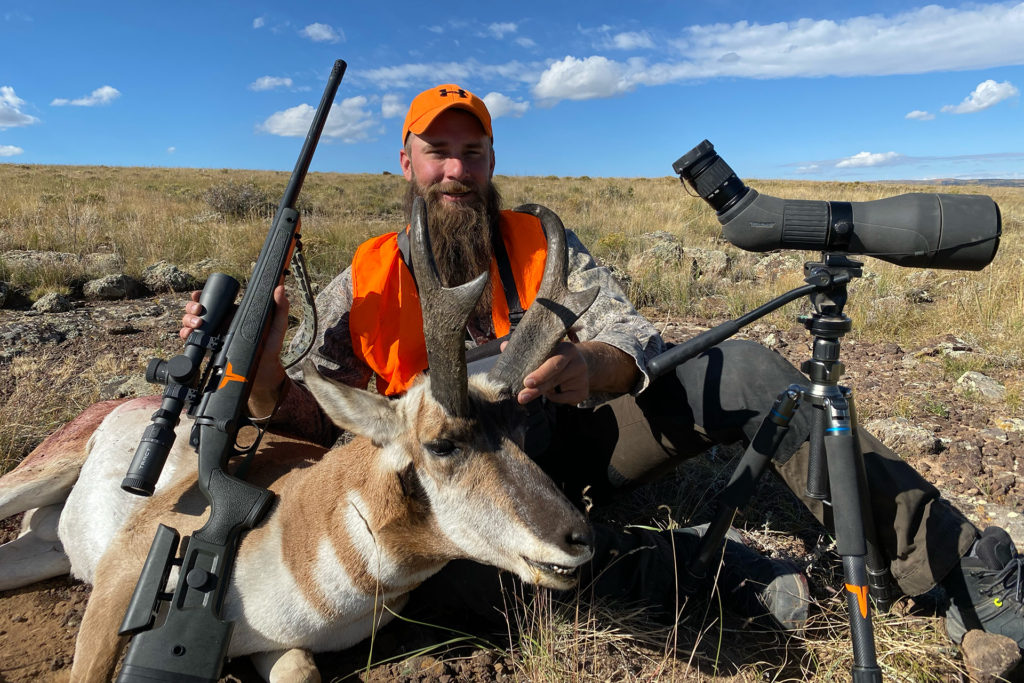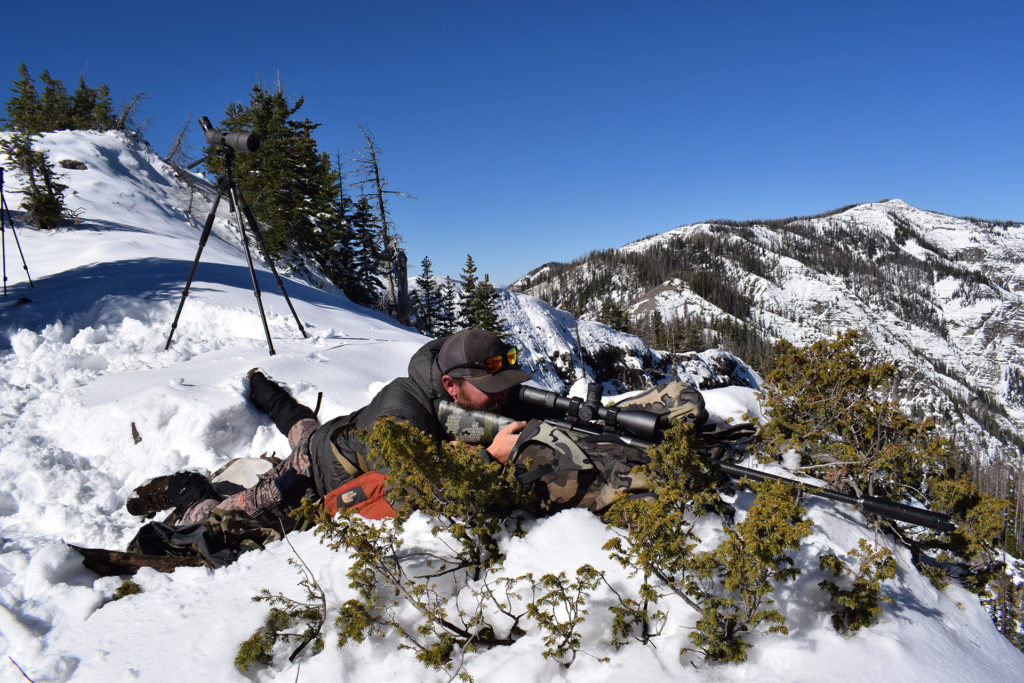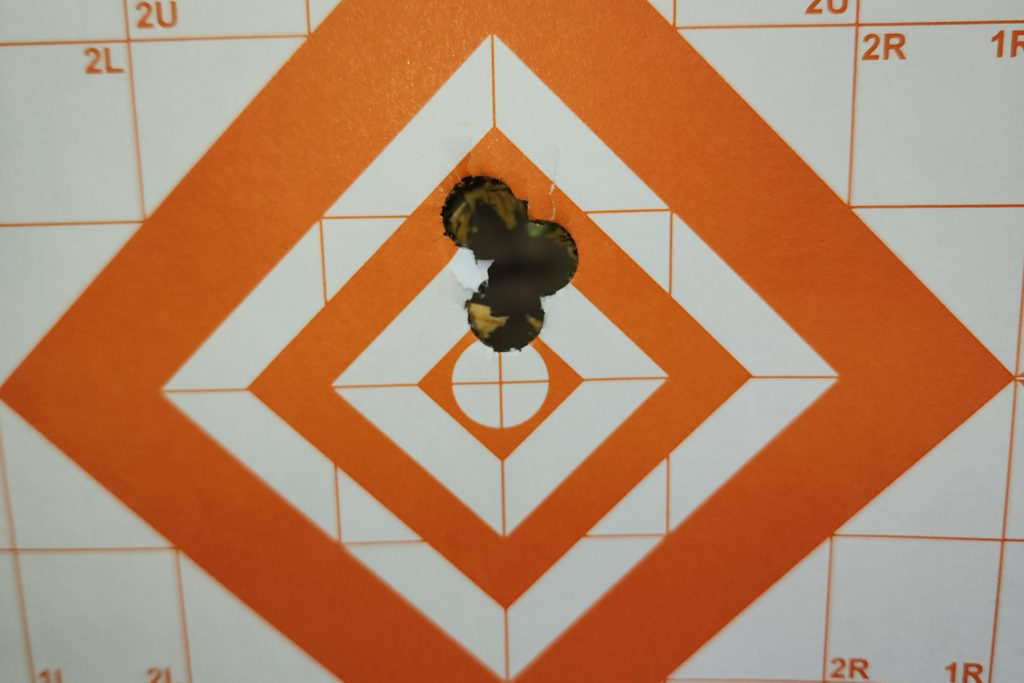These 6 tips for shooting are what we've found over the years have helped us shoot tighter groups on the range and find more success in the field.
These are more suggestions, not modicums to shoot by. Being a rifleman is just like any other way of life capable of temporary shortcomings - baseball slumps, bad golf swings, writer’s block - it doesn’t mean you’re perennially bad, just that you need to make a slight adjustment.
And some folks are better shooters than others. While it’s typically natural talent that shines early on, it’s the practiced fundamentals that will help us get better over time. The following are a few tips for shooting we find essential to tighter groups.
Choose the Right Caliber
Sometimes less is more and sometimes it’s just right. Which is why choosing the right caliber is one of our most important tips for shooting.
So often we get caught up on the opposite side of this spectrum with a “bigger is better” mentality and in doing so performance suffers. If you’re five feet, five inches and 160 pounds with an elk hunt on the horizon, don’t try to punish yourself with a .300 Remington Ultra Mag. Any .30 caliber bullet will kill an elk and not your shoulder when you plan on putting a couple hundred rounds through the rifle prior to the hunt. Regardless of your intent, know your limitations. It’s more fun and you’ll become a better shooter by choosing a caliber suitable to your needs.
Buy a Quality Rifle Scope
Quality glass customized to the gun it sits upon is a finer combination than peanut butter and jelly. If you’re searching for an optics manufacturer within your specifications and price range, we may know one. If you have an accurate rifle, say one that’s built to shoot sub-MoA out of the box, get a riflescope you can count on to stay true in the toughest of conditions. We guarantee your satisfaction for years to come.
Low Power for Higher Accuracy
If you’re having trouble consistently shooting tight groups when your riflescope is dialed up to full power, try lowering the magnification. Distortion, heat waves and heartbeats are much more amplified at high power (14x) than lower (6x) or even medium (10x). In essence, the view is steadier with lower power.

Our good friend Zane Kraetsch took this fine pronghorn from several hundred yards with one perfectly placed shot.
This tactic should also carry over into the way you hunt. If you’re not an every-day-range shooter, don’t take super long shots at animals. Instead, power down and get closer. Where you may not be the best in one area (shooting), you can find strength in another (stalking).
Use a Sturdy Rest
This doesn’t have to be a bench with a 10-pound sandbag. A sturdy rest might come in the form of elbow to knee (bone on bone) contact while squatting on your heels. Prone, perhaps the sturdiest of all, is a great way to practice. Consider this: how often will you be provided a shooting bench when the moment of truth arrives?

A sturdy rest can come in many forms from a bag at the range to the fork of a tree in the mountains.
Practice prone, kneeling, and offhand. In a recent Field & Stream article, field editor Phil Bourjaily traveled to Arizona where he went through two intensive days of training with Gunsite Academy's rangemaster Eric Olds. Bourjaily described the offhand technique as “[it] wasn't the target shooter's stiff-legged, elbow-up, turn sideways approach. Instead, he had me square up to the target, knees slightly flexed, weight on the balls of my feet. I held my elbows angled down at 45 degrees, pulling the rifle into my shoulder and twisting both hands downward slightly as I gripped the rifle ‘as if wringing a towel.’”
This particular stance, “adapted from combat handgun shooting, would allow me to recover from recoil more quickly in case I needed to follow up.”
Don’t Fight the Rifle
This is my rifle. There are many like it, but this one is mine. - Rifleman’s Creed
For optimal accuracy, don’t fight the rifle, meaning every rifle will want to point its own way. Not that it has a mind of its own, rather the makeup of the rifle and the build of your body will create a unique cohesion that can be coaxed into a rifle-shooter combination that serves as one unit.
Natural Point of Aim (NPA) is the spot that a shooting position, correctly assumed, will direct the shot to go when the shooter is completely relaxed. To achieve NPA, hold the rifle in a natural shooting position and relax like you’re trying to sleep. Close your eyes and breath in and out for several seconds. When you open your eyes, there’s a good chance the alignment of the rifle is off. Instead of wrestling the gun back into position, swivel the entire rifle-shooter combination to get back on target. Finding your NPA eases muscle tension in order to maintain the “structural integrity” of the position.

While it’s typically natural talent that shines early on, it’s the practiced fundamentals that will help us get better over time.
Squeeze With Empty Lungs
You’re all set up for the shot. Take a couple breaths. Exhale completely. Squeeze the trigger on empty lungs. While this seems like common sense it’s actually quite difficult, especially in a live hunting situation. Not so much difficult in the sense that we have trouble breathing while shooting, buck fever and high-altitude hunting being the exceptions. Most of us don’t think about breathing when shooting. As you inhale and exhale, your core moves, which causes the rest of your body to move, if only slightly. Shooting with empty lungs, and this, again, does not mean hold your breath, will allow the body to come to a complete resting point for an instant, just enough time to squeeze the trigger.
Breath control is a critical element in the fundamentals of making accurate shots, so the natural goal of proper breathing is to minimize body movement. An inch off at 100 yards is not really a big deal, but the greater distance between you and the target, the larger the margin of error.
Tips for Shooting
We hope these tips for shooting will help increase your abilities as a rifle shooter and your overall effectiveness as a hunter. Consider doing some dry-fire runs while you’re getting used to these new techniques with your rifle. And remember, at the end of the day it’s all about having some fun.
